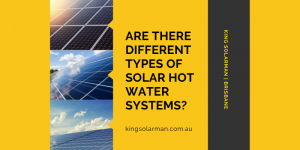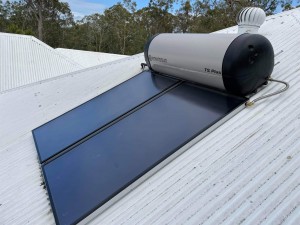 We live in an age where we’re increasingly aware of the repercussions our consumer and lifestyle choices have on the planet. In the digital era, we can no longer afford to bury our heads in the sand.
We live in an age where we’re increasingly aware of the repercussions our consumer and lifestyle choices have on the planet. In the digital era, we can no longer afford to bury our heads in the sand.
Fortunately, with the right help and support, it’s easy to outfit your home with more energy efficient and sustainable apparatus from your roof to your windows. Of course, making your home more energy efficient and sustainable isn’t just a boon for the environment, it can save you a small fortune on your energy bills. And with generous government rebates, the initial outlay you can expect for things like solar systems can be offset considerably.
Of course, if you want to harness the power of solar energy to make your home operate more sustainably, solar electric panels are just the tip of the iceberg. Many eco-savvy Australians know that solar energy can also be used to heat your water far more sustainably and cost-effectively than electricity or gas. In fact, according to the Department of Environment and Climate Change NSW, a solar hot water system can save you up to 75% on your water heating costs compared to gas boilers or electric storage heaters.
But are there different types of solar hot water systems? How do they work and how do you know which is the right one for you? Let’s dive deep to find out more about the different kinds of solar hot water systems.
The big three
There are three types of solar hot water systems. Two are fairly well known while the third is contested by some (we’ll get to that). These are;
- Flat plate collectors with a roof mounted tank
- Evacuated tube collectors
- Heat pump systems
Let’s take a closer look at all three and how they work…
Flat plate collectors with a roof mounted tank
These are the most commonly used used type of collector for household solar water heating. The flat plate collectors are shallow rectangular boxes with aluminium bodies and glass lids which sit on your roof. They typically measure around 1-1.5x 2-2.5 metres in size. Copper pipes run through this glass covered collector. A layer of horizontal fins goes over the pipes to help them to absorb more heat. The copper heats the water and the pipes feed water back and forth to a water storage tank on the roof. The heated water within is then thermo-siphoned out of the storage tank.
Evacuated tube collectors
When it comes to evacuated tube collectors, you’ll find much more variation in design and performance than you might with flatbed collectors. In an evacuated tube systems, two annealed glass tubes fused together at the top and bottom. All the air is sucked out of the space between the two tubes to create a vacuum. Why? Because a vacuum is a much more efficient insulator.
A copper heat pipe runs through the centre of the tube to meet a common manifold which in turn connects to a slow flow circulation pump. Because the tubes are round and not flat they can absorb more heat no matter where in the sky the sun is. The circulation pump sends water to a heavily insulated standalone storage tank below, heating it throughout the day.
If the water in the tank should drop below a certain temperature, it will be redistributed back to the pipes by an electric pump to be reheated.

Heat pump systems
Heat pump systems don’t use any collectors, but they are still technically solar systems. While traditional collector-based solar hot water systems harness sunlight to heat the water, heat pumps pull solar heat from the ambient air around them and use this heat to increase your water temperature. Believe it or not, even on cold winter months there is enough heat in the surrounding air to heat your water, even up to boiling point.
Although heat pump systems do use some electricity to remove the heat from the air and transfer it to your water, they use around 75% less electricity than a conventional electric water heater.
In fact, most systems (heat pumps, flat plate collectors and tube collectors) work in tandem with either a gas or electric booster. This supplements the solar hot water system when there’s not quite enough energy from the sun. So you’ll never have to worry about showering or washing your dishes in tepid water on cloudy days.
How can we help?
At King Solarman we are highly specialist in all kinds of solar hot water systems. We can advise on which system works best for your home and carry out expert installations to start your household making great energy savings sustainably.
If you’re ready to take the plunge, Click Here to get in touch with us today.
